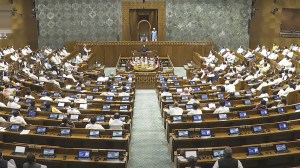Committee to integrate Mumbai local, metro rail networks
Mumbai’s metro network currently consists of three operational lines – Metro 1, 2A, and 7.
 Mumbai’s metro network currently consists of three operational lines – Metro 1, 2A, and 7, connecting important suburban locations. (File photo)
Mumbai’s metro network currently consists of three operational lines – Metro 1, 2A, and 7, connecting important suburban locations. (File photo)The Centre and the Maharashtra government have recently formed a committee to integrate Mumbai’s suburban and metro rail networks.
Sources said the move will streamline public transport infrastructure across the Mumbai Metropolitan Region (MMR) and ensure coordinated planning between various transport agencies for a better commuter experience.
Organisations like the Central Railway, Western Railway, Mumbai Railway Vikas Corporation (MRVC), Mumbai Metropolitan Region Development Authority (MMRDA), City and Industrial Development Corporation, Brihanmumbai Electric Supply and Transport, MahaRail, and the Urban Development Department will have one representative each in the committee.
According to sources, MMRDA, the key organisation overseeing metro construction in the MMR, will chair the committee.
Sanjeev Kumar, Executive Director, Railway Board, wrote a letter to MRVC on Thursday, emphasising that local train and metro service integration has to be enhanced.
A senior MRVC official said, “The committee will suggest pedestrian bridges, subways, or alternatives to connect metro lines running through or close to railway station locations. It will also see that there is clarity on which agency will undertake the construction.”
Earlier, the Railway Board had sent letters to agencies concerned requesting them to nominate representatives for the committee. All members are likely to have a joint meeting soon.
The Mumbai suburban railway network presently stretches from Chhatrapati Shivaji Maharaj Terminus (CSMT) to Kalyan, Kasara, and Karjat on the Main Line, between Thane and Panvel/Vashi on the Trans-Harbour line, and CSMT to Panvel and Vashi on the Harbour Line. Suburban trains also operate from Churchgate to Virar and Dahanu Road.
Mumbai’s metro network currently consists of three operational lines – Metro 1, 2A, and 7, connecting important suburban locations. Several lines are under construction, aiming to build an integrated and more than 300 km network to ease pressure on suburban trains.











